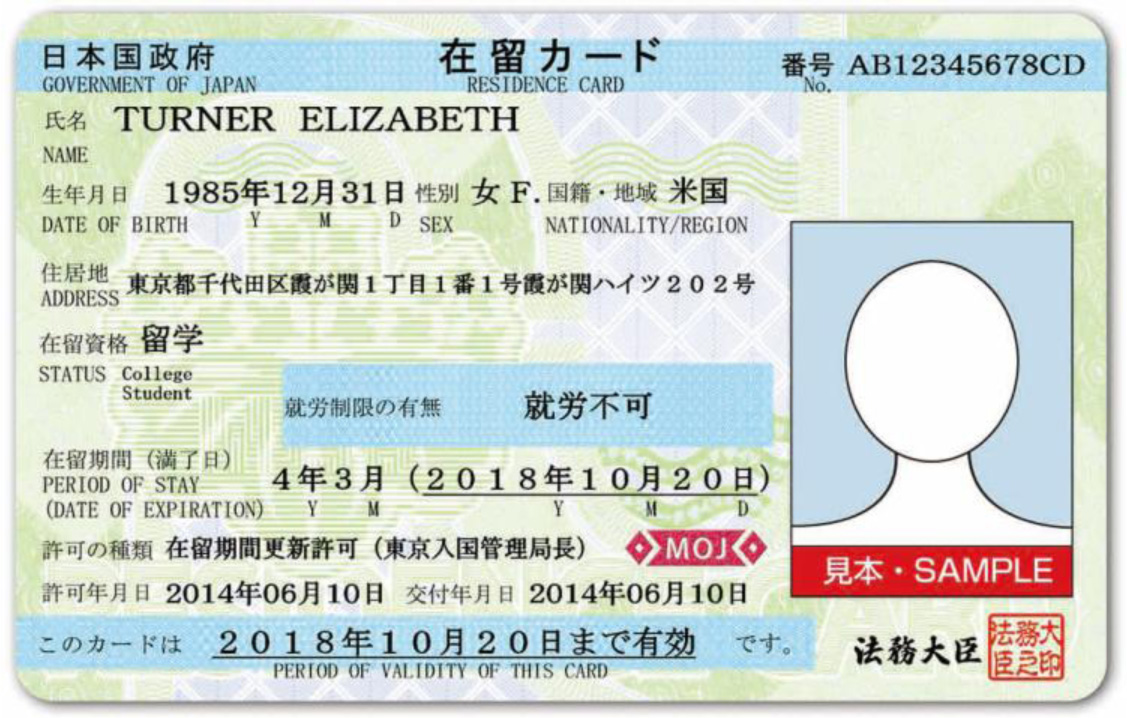公開日 2020年04月20日
更新日 2021年11月22日
Basic Info for Foreigners in Japan about Covid 19 ¥100,000 Payment to Every Resident: How to apply

The government of Japan will be making a one-time, across-the-board ¥100,000 ($930) cash payment to every resident of Japan in order to mitigate the economic fallout from the spread of the coronavirus in the country.
Below we summarize the answers to FAQs about whether resident foreigners are eligible (yes, they are), how to apply, when you can expect to receive the payment, and so on.
Q: Are resident foreigners eligible?
A: Yes. Eligibility for the cash subsidy from the government is based on the Basic Resident Register, which means that all residents of Japan are eligible, including resident foreigners as long as you have a Residence Card.
There are no age or income restrictions on the “¥100,000 per person” subsidy.

Sample of a Residence Card. Image: Immigration Bureau of Japan
Q. How do I receive the subsidy?
A. Apply for the subsidy by filling out the application form that will be mailed to you by your local municipal government (city, town, or village) office. The application form will be sent by postal mail to the head of every household in Japan. If you live by yourself, obviously, you are the head of your household.
To prevent fraud, the name of the “head of household” will pre-printed on the application form. If you wish to receive the subsidy, fill in the required information, including the bank account number where you want the subsidy to be deposited.
In order to minimize person-to-person contact, as a rule, you will not be able to pick up the payment in cash from your local city or ward office. For people who don’t have a bank account, however, the government is considering allowing them to receive the payment in cash from their local government.
If you have a My Number Card, and can digitally verify your identity, you’ll be able to go to a website where you can apply for the subsidy online.
Q. When will I receive the subsidy?
A. Deputy Prime Minister/Minister of Finance Aso indicated at a press conference on April 17th that he would like the government to start sending out cash benefits in May. However, since the ¥100,000 across-the-board subsidies were a last minute decision that overrode the original ¥300,000 subsidies that were already approved for families with reduced income, it will take longer to approve the supplementary budget to cover the expense. For this reason, it’s not clear the government will be able to roll out payments in May and how efficiently local governments will be able to disperse them.
Q. What about households that originally qualified for ¥300,000 subsidies?
A. In some cases, certain households will end up receiving less than under the original plan, which would have given ¥300,000 to households with significantly reduced income, whether this was a single person, married couple without children, or single parent with one child. In each of these cases, the “household” would have received ¥300,000, but under the new plan, the payment is ¥100,000 per resident. This means, for example, that a single person with reduced income, would receive only ¥100,000, not ¥300,000 as originally intended.
Reduced income households with two parents and a single child, however, would still receive ¥300,000 (¥100,000 per person), so the amount of the cash subsidy would not change.
Q. Is the cash subsidy taxable?
No, it is tax exempt.
Q. What is the purpose of the cash subsidy?
A. The government has said that the purpose of the cash subsidy is to help support people’s livelihoods. It is not specifically targeted to help revitalize the economy or to boost spending. Because the state-of-emergency declaration was expanded nationwide on April 16th, the economic impact on people’s lives will be much wider and deeper than originally anticipated.
Q. How will the government cover this expense?
A. Japan will issue deficit-financing bonds to cover the approximately 12.6 trillion yen require to make a ¥100,000 payment to each of Japan’s approximately 126 million residents. The government had originally planned to issue bonds worth 8.6 trillion yen to cover the ¥300,000 payment to households with reduced income (for a total of 4 trillion yen). The new plan will require an additional 8.6 trillion yen of financing.
 0120-593-186
0120-593-186